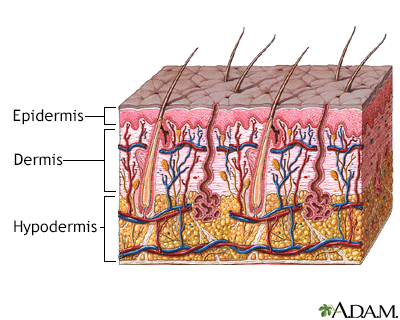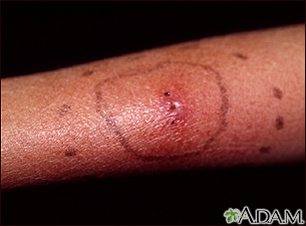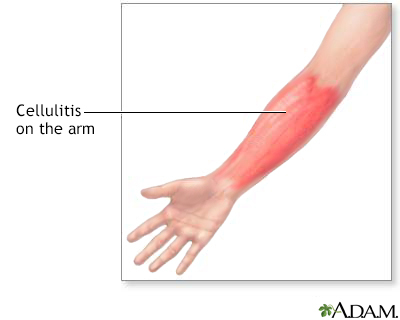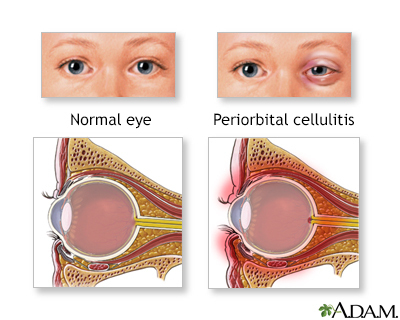Courtney and the Cancer She Never Planned For
Courtney has always been a planner, even as a child. Growing up in Gainesville, she produced pretend weddings for her sister and neighborhood friends, ensuring…

Update your location to show providers, locations, and services closest to you.
Cellulitis is a common skin infection caused by bacteria. It affects the middle layer of the skin (dermis) and the tissues below. Sometimes, muscle can be affected.

Skin infection - bacterial; Group A streptococcus - cellulitis; Staphylococcus - cellulitis
Staphylococcus and streptococcus bacteria are the most common causes of cellulitis.
Normal skin has many types of bacteria living on it. When there is a break in the skin, these bacteria can cause a skin infection.
Risk factors for cellulitis include:
Symptoms of cellulitis include:
The health care provider will perform a physical exam. This may reveal:
The provider may mark the edges of the redness with a pen, to see if the redness goes past the marked border over the next several days.
Tests that may be ordered include:
You will likely be prescribed antibiotics to be taken by mouth. You may be given pain medicine as well, if needed.
At home, raise the infected area higher than your heart to reduce swelling and speed up healing. Rest until your symptoms improve.
You may need to stay in a hospital if:
Cellulitis usually goes away after taking antibiotics for 7 to 10 days. Longer treatment may be needed if cellulitis is more severe. This may occur if you have a chronic disease or your immune system is not working properly.
People with fungal infections of the feet may have cellulitis that keeps coming back, especially if you have diabetes. Cracks in the skin from the fungal infection allow the bacteria to get into the skin.
The following may result if cellulitis isn't treated or treatment doesn't work:
Call your provider right away if:
Protect your skin by:
Whenever you have a break in the skin:




Dinulos JGH. Bacterial infections. In: Dinulos JGH, ed. Habif's Clinical Dermatology. 7th ed. Philadelphia, PA: Elsevier; 2021:chap 9.
Heagerty AHM, Harper N. Cellulitis and erysipelas. In: Lebwohl MG, Heymann WR, Berth-Jones J, Coulson IH, eds. Treatment of Skin Disease: Comprehensive Therapeutic Strategies. 5th ed. Philadelphia, PA: Elsevier; 2018:chap 40.
Pasternack MS, Swartz MN. Cellulitis, necrotizing fasciitis, and subcutaneous tissue infections. In: Bennett JE, Dolin R, Blaser MJ, eds. Mandell, Douglas, and Bennett's Principles and Practice of Infectious Diseases. 9th ed. Philadelphia, PA: Elsevier; 2020:chap 93.




Courtney has always been a planner, even as a child. Growing up in Gainesville, she produced pretend weddings for her sister and neighborhood friends, ensuring…

http://podcasts.ufhealth.org//media/2010/02/2568-Is-Cellulite-Here-To-Stay-_-2568-Is-Cellulite-Here-To-Stay.mp3 Exercise and a good diet can go a long way toward sculpting the perfect body, but...